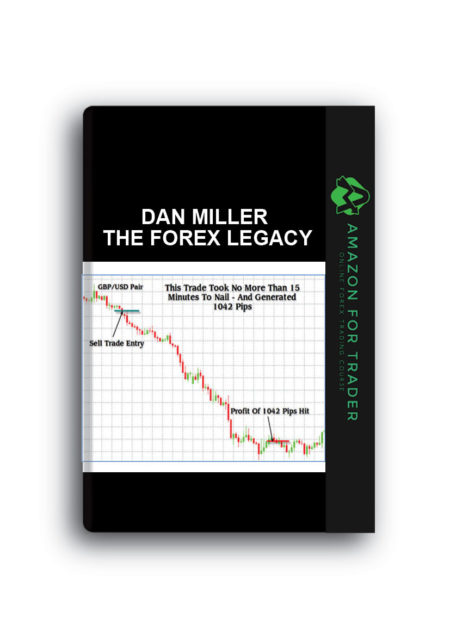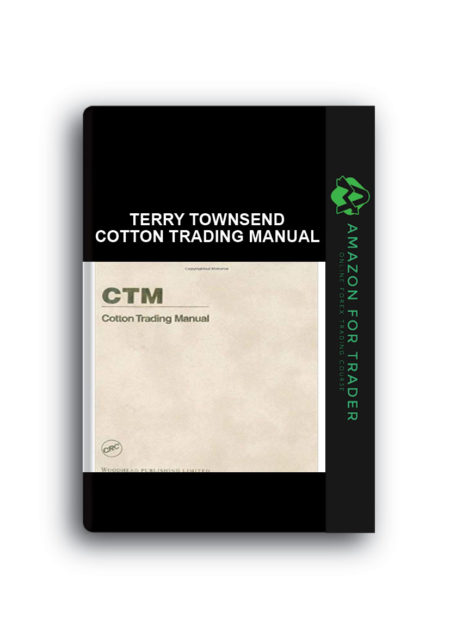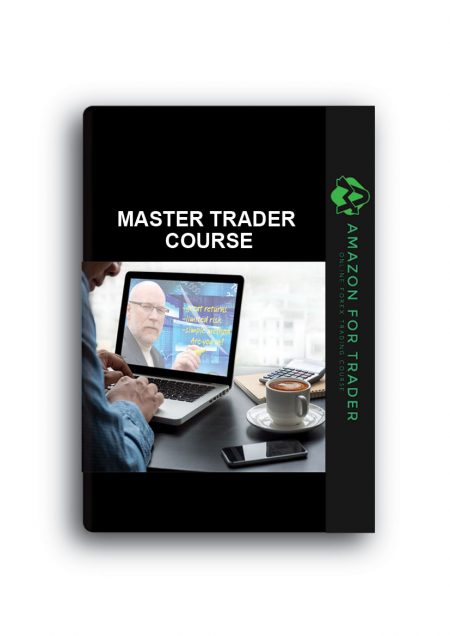Description
Top Gun Options Webinar 2010 All Levels
Top Gun Options 2010 Training Webinars Complete – All Levels, Primary, Intermediate & Advanced Classes + Introduction to options – Outstanding education stuff!
In this high-energy in brief you’ll learn who Options University is and how we transferred the same processes and methodologies that we used in combat situations and applied them to options trading on Wall Street. Trading is a form of combat. You’ll learn how our unique, proprietary training system can take someone who has no idea what an option is, and in a short amount of time turn them into a proficient trader.
1 – What is an Option?
See how we take a ‘building block approach’ to teach the art and science of options trading, starting with the most basic concept – the option itself. You’ll learn about the benefits of trading options, including leverage and limited risk, and the benefits of options over stocks.
2 – Option Contracts
Options are traded in a market and we look at how they work, including a behind the scenes look at the role of OCC. You’ll learn the two types of options contracts: call and puts. We explain the specific characteristics of options including: strike price, expiration, and premium. We also explain the rights and obligations that come with options.
3 – Long Calls
Learn the most basic bullish tactic and how it works for the buyer (holder), and how you must begin your options trading with a determination of your strategic mindset – bullish, bearish, volatile or neutral. Learn how to read the profit and loss diagram, including max risk, max loss, and breakeven. We show a simple example of this bullish tactic using Freeport McMoran (FCX) and how only 3 things can happen to the stock.
4 – Short Calls
We take a look at the other side of the long call, a bearish to neutral tactic known as the short call. Explore the short call in terms of the seller (writer), and the obligations of being ‘short’. We look at the profit and loss diagram of the short call, the risk of assignment, and review the most basic short call strategy, the covered call. We take a look at the other side of the FCX trade.
5 – Long Puts
We roll inverted and explore the most basic bearish tactic, the long put, and how you can make money when a stock falls. We take a look at the profit and loss diagram of the long put and identify the max profit, max loss, and breakeven. We use FCX as our bearish example and how only 3 things can happen to stock and how we can profit using the long put.
6 – Short Puts
The other side of the long put is the short put, a neutral to bullish tactic. We look at what being ‘naked’ means and how it can be potentially dangerous to the seller (writer). Being on the opposite side of the buyer you are ‘short’ and carry risk of assignment. We look at a huge benefit to selling a put – the ability to buy a stock you like at a discount.
7 – Options Indoc Outbrief
In this high energy out brief you’ll learn that Top Gun Options is not for everyone. Investors who join the proprietary Top Gun Options program are a select group who are ready to commit the effort and dedicate the time required to succeed. Top Gun Options is a program like no other, where our skill based education and practical applications will set up for success. If you trade options now, we’ll make you better. Discipline. Risk Management. Superior Execution. Top Gun Options.
Tue, August 03, 2010 Primary Education, 8PM EDT
An introduction to option chains helps to better understand price information. The data is consistent from brokers and internet vendors and the option chain columns are explained including stock, month, bid/ask, volume and more. A discus ion of moneyness for determing which strike to buy or sell breaks down in the money, at the money, and out of the money. This is the relationship between the strike price and the current price of the underlying asset. Intrinsic or real value of an option is calculated and time value concept is explored. Calculations for ITM, ATM and OTM show the importance for increasing probability.
Tue, August 10, 2010 Primary Education, 8PM EDT
The importance of a trade plan is discussed as a discipline tool. The components of this plan are laid out to have an objective approach for each and every trade. An example of Google is used based on our expectations. A directional long call tactic is introduced to build and executed a trading plan. Goldman Sachs is evaluated technically and the expected volatility calculated to select months and strikes. Varying scenarios are evaluated to watch strikes and greeks reactions for different options.
This session began with the How and Why options are priced and the factors that effect them. A brief history of pricing models lays a foundation for the six factors that influence the price of an option. The ITM, ATM and OTM comparison for separate inputs changes in pricing variables. A more in depth discussion of these factors introduces the option “greeks” and sensitivity measures. When buying or selling options this information is used to anticipate how the price will react in varying market conditions. Volatility as a critical input is discussed at length using the bell curve illustration for historical volatility. Implied volatility helps indicate expectations and weather an option is expensive or cheap to select proper trading tactic. This class finishes with an introduction to the VIX and how to determine expected volatility.
Wed, August 11, 2010 Primary Education, 8PM EDT
Put tactics are introduced. A review of long put basics looks at OTM, ITM, and ATM strikes. An IBM option is evaluated using stock technicals, expected volatility and greeks. This information is used to compare strike payoffs and premium action from time and stock price changes. The trade management plan examines the risk control and position moving both for and against us. The protective put as insurance analogy is used to protect stock positions. A strike comparison shows the coverage of this tactic. An example of a significant stock profit in Sandisk looks at different levels of protection and the cost and payoff. Married puts have tax implications that are important to to be aware.
Mon, August 16, 2010 Expiration Week Special
The recast of this special expiration week webinar can be seen using the link below:
Replay The Webinar
Tue, August 17, 2010 Primary Education (Final Class)
The last primary class breaks down two tactics. These are useful selling tactics to generate income for the portfolio. The cash secured naked put is broken down with and example trade and a trading plan. A discussion using Starbucks brings in topics of fundamentals, support, break even cost basis calculations and selecting strike prices. The final primary tactic is the covered call. This is designed to increase revenue form stocks held. A discussion of profit and loss outcomes and risk control is examined for APPLE stock at different strikes and a way to sell a stock. A trade plan is constructed for Bristol Meyers Squibb covered call to increase performance on long shares.
Wed, August 18, 2010 Intermediate Education (First Class)
Synthetic Long Stock
By trading long calls and short puts in combination we can create a position that acts just like a long stock position – with all of the risks and rewards. One difference though, which is neither a benefit nor a detriment, is that you do not receive a dividend. But synthetic stock can often times be purchased with a much smaller capital requirement than buying stock on margin.
Synthetic Short Stock
Just the opposite of synthetic long stock, again with all the risks and rewards of a real short stock positions. Both synthetic long and short stock trades can be used by themselves, or used as adjustments to positions.
Mon, August 23, 2010 TradeMONSTER Platform Brief
A recording of the TradeMONSTER Platform Brief can be seen using the link below:
Replay The Webinar
If you do not already have a paper trading account, please allocate some time before class to sign up for a paper trading account with TradeMONSTER. The instructors will be using TradeMONSTER for the much of the Top Gun Options Course, so it will be best for you to also have an account with them.
Tue, August 24, 2010 Intermediate Education
Short calls
We take a look at the other side of the long call, a bearish to neutral tactic known as the short call. Explore the short call in terms of the seller (writer), and the obligations of being ‘short’. We look at the profit and loss diagram of the short call, the risk of assignment, and review the most basic short call strategy, the covered call.
Short puts
The other side of the long put is the short put, a neutral to bullish tactic. We look at what being ‘naked’ means and how it can be potentially dangerous to the seller (writer). Being on the opposite side of the buyer you are ‘short’ and carry risk of assignment. We look at a huge benefit to selling a put – the ability to buy a stock you like at a discount.
Wed, August 25, 2010 Intermediate Education
Bull Call Spread
We look at another bullish tactic that combines a long call and a short call in the same expiration month. Call spreads offer limited reward and limited risk, and also protection from a drop in volatility. Call spreads can also be traded as higher probability trades by moving the spread deeper in the money.
Bear Call Spread
This is just the opposite side of the Bull Call Spread that can be traded when you think a stock is moving lower. Also a limited risk, limited reward tactic, and can be structured as a higher probability trade by placing the strikes out of the money.
Tue, August 31, 2010 Intermediate Education
Bear Put Spread
We cover this tactic for bearish trades. The spread is created with a long put and short put with the same expiration month. Put spreads are limited risk and limited reward just like call spreads. And the spread offers protection from a drop in volatility.
Bull Put Spread
This is just the opposite tactic of the Bear Put Spread. Created by selling one put short and buying a long put, again with the same expiration. Bull Put Spreads also have limited risk and limited reward. This tactic offers a low risk alternative to selling puts naked.
Wed, September 01, 2010 Intermediate Education
Calendar Spreads
This neutral tactic is used for stocks that you expect to stay in a trading range. Money is made with this trade from the time decay. Call Calendar Spreads are created by buying a longer term call and selling a shorter term call with the same strike price. Put Calendars are created the same way. And both tactics offer limited risk and limited reward.
Tue, September 21, 2010 Collar Spreads Class
This is an extra class on the topic of collars. The recording can be seen using the link below:
Wed, October 27, 2010 First Advanced Class
The initial advanced options class dove right into volatility, straddles and strangles. The class initiated with an overview of the different types of volatility and how they affect both your risk and your selection of tactics. We reviewed and compared volatility with ATR and BETA offering a three pronged approach to analyzing volatility in its different forms. When employing a neutral tactic, it is paramount to understand the movements of your stock in addition to the implied volatility of the options.
From there we examined the most straightforward volatility tactics, the long straddle and strangle. We went into detail about the limited risk and unlimited reward characteristics of each as well as the effects of the time, volatility, stock price change and gamma of each. Short straddles and strangles are a way to express negative views on volatility and neutrality in stock, which will be explained in the next session. We discussed the less risky alternatives to naked short selling and will get into more depth in session two. We finished the class with several real life examples of the 2 strategies.
Wed, November 03, 2010 Second Advanced Class
This week’s session was all about straddles and strangles. Straddles and strangles are used to express a neutral sentiment in the marketplace. We spent quite a bit of time quantifying exactly what ‘neutral’ means and how straddles and strangles can be used to either express a range bound sentiment or a potentially volatile move in one direction or the other. The Greeks, namely Vega and Theta are extremely important when it comes to straddles and strangles, as they both can have dramatic effects on your P&L. Delta and Gamma play a role when determining not only where you will place your strikes, but also how your position and risk will change with changes in the underlying stock price.
Straddles can also be used to measure the option market’s expected move over earnings. Next Week we will reduce risk by learning butterflies.
Wed, November 10, 2010 Third Advanced Class
Wednesday’s advanced educational session was a detailed discussion on butterflies, in all of their forms. long, short and iron, using both calls and puts. We reviewed not only the risk/reward characteristics of each strategy, but went in depth on the Greeks and behavior of the tactics, while you were in the trade.
Long regular butterflies and Short Irons were the main focus, and we went through several real life trade examples. The limited risk/reward characteristics along with the breakeven levels are important to analyze (visually) before entry.
Using live examples, we formed our trade checklist, from creating our strategic mindset to exiting the trades.
Next week we will explore modifying those trades into broken wing butterflies and ratios.
Wed, November 17, 2010 Fourth Advanced Class
In the fourth Advanced class we learn about broken wing butterflies and begin by reviewing standard butterflies. We cover the changing risk profile and some inside tips on looking at how to choose the best stocks to employ call versus put broken wing butterflies. We cover the Greeks in depth and walk through several real world trade examples from start to finish.
Mon, November 22, 2010 Fifth Advanced Class
In the fifth Advanced class we learn 2 critical tactics: condors and iron condors. We start out by reviewing butterflies and compare the butterfly tactics to condors and iron condors to compare. We cover how these new tactics change our risk profile. We cover both call and put condors/iron condors and when to employ which tactics. We cover the Greeks in depth and walk through several real world trade examples.
Wed, December 01, 2010 Sixth and Final Advanced Class
In this final Advanced class we started by reviewing calendar and vertical spreads and how these tactics morph into a tactic called a diagonal. We discuss how we can use time decay and direction to morph into a credit vertical. We also cover how a diagonal can be a cheap covered call substitute. We cover in detail the criteria we use, especially risk versus reward, and step through several examples in depth.
Top Gun Options Webinar 2010 All Levels, Download Top Gun Options Webinar 2010 All Levels, Free Top Gun Options Webinar 2010 All Levels, Top Gun Options Webinar 2010 All Levels Torrent, Top Gun Options Webinar 2010 All Levels Review, Top Gun Options Webinar 2010 All Levels Groupbuy.


 Dan Miller – The Forex Legacy (theforexlegacy.com)
Dan Miller – The Forex Legacy (theforexlegacy.com) Terry Townsend – Cotton Trading Manual
Terry Townsend – Cotton Trading Manual Perry Marshall – Slingshot Recovery
Perry Marshall – Slingshot Recovery The A14 Weekly Option Strategy Workshop Amy Meissner
The A14 Weekly Option Strategy Workshop Amy Meissner Build and Backtest Algorithmic Trading Portfolios with Python - Quant Science
Build and Backtest Algorithmic Trading Portfolios with Python - Quant Science Mental Models for Better Thinking - Fscourses
Mental Models for Better Thinking - Fscourses Simplertrading - The New Ready. Aim. Fire! Pro System ( Elite Package )
Simplertrading - The New Ready. Aim. Fire! Pro System ( Elite Package ) Slow REEDS Masterclass - Reeds Trader
Slow REEDS Masterclass - Reeds Trader Trading for a Living: The Complete Stocks & Options Course - Dr. STOXX
Trading for a Living: The Complete Stocks & Options Course - Dr. STOXX ETF Finder Formula Elite Package - Simpler Trading
ETF Finder Formula Elite Package - Simpler Trading Ultimate Titan Trader Bootcamp - Seasonal Swing Trader
Ultimate Titan Trader Bootcamp - Seasonal Swing Trader




Reviews
There are no reviews yet.